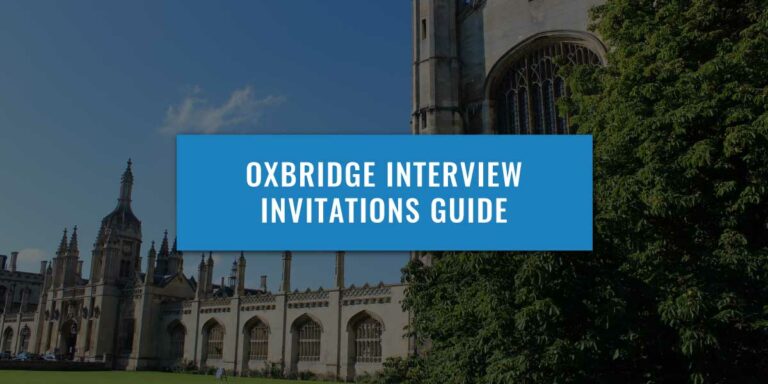As of 2024, the BMAT will no longer operate for Medicine applicants. Applicants for all UK medical schools, including Imperial will be required to sit the University Clinical Aptitude Test (UCAT) for 2025 Entry. Find out more in our BMAT/UCAT 2025 Guide.
How Universities use the BMAT: Imperial College BMAT Cut-Off Explained
The BMAT is used differently by each university in the UK. For example, the Imperial BMAT cut-off will be slightly different from that of Cambridge. We recommend that students take the time to understand exactly how the exam is assessed for their chosen medical school and what their BMAT cut off is.
Sometimes it is worth setting a BMAT target score. Knowing the BMAT cut-off scores is one way of doing this. It’s always good to be well-informed, so we have highlighted how different universities weigh the BMAT.
Students applying for Oxbridge, UCL, and Imperial (amongst others) require the BMAT. Below we discuss the Imperial BMAT cut off. We also have pages containing the BMAT cut off and weightings for other medical schools at the bottom of this article.
What score is needed?
The BMAT (Biomedical Aptitude Test) is an admissions test used by several medical schools. Imperial is currently the only medical school that employs a strict cut-off score for all three sections. This means that Imperial College will only offer interviews to candidates who have achieved scores above the cut-offs, amongst other criteria.
The exact cut-off value changes every year, but in 2020, it was the following;
- Section 1: 3.5 minimum score.
- Section 2: 3.5 minimum score.
- Section 3: 2.5C.
- Section 1 + 2 Sum Score: 10.9.
Students who don’t achieve this score are automatically rejected by the university. Although it cannot be confirmed, the cut-off score is likely to be slightly higher for 2021 (2022 entry) due to the increased number of medicine applicants.
In Section 1, one-quarter of applicants scored between 5.0 and 5.9, and approximately 15% scored between 6.0 and 6.9.
In Section 2, approximately 20% of applicants scored a 3 for quality of written content. About 25% scored above a 3. For the quality of English mark, over 70% scored an A here.
Be ready for the UCAT now that the BMAT has been removed.
With the BMAT being removed, it is more important than ever to be prepared for the UCAT. At UniAdmissions, we are experts at boosting your UCAT score and maximising your chances of gaining a place to study Medicine.
Discover our UCAT Programme by clicking the button below to enrol and triple your chances of success.
Previous Imperial BMAT Cut Off Scores
Before we go into what score is needed to pass the Imperial BMAT cut off 2019, lets look at some scores from previous years and see how they compare….
- In 2019 the Imperial BMAT cut off was:
The Imperial BMAT cut off 2019 comprised of individual cut offs for each of the three sections of the BMAT.
- Section 1: 3.5 minimum score.
- Section 2: 3.5 minimum score.
- Section 3: 2.5C.
- Section 1 + 2 Sum Score: 8.5.
Candidates are required to have achieved a score above the cut off in all of these individual sections of the BMAT in order to achieve an interview, amongst other criteria.
Section 1 and Section 2 are scored out of 9 points each. Meanwhile, Section 3 is scored out of 5 points, with an additional letter grade (A to E) for grammar.
- In 2018 the Imperial BMAT cut off was:
- Section 1: 4.1.
- Section 2: 4.2.
- Section 3: 2.5C.
- In 2017 the Imperial BMAT cut off was:
- Section 1: 4.5.
- Section 2: 4.6.
- Section 3: 2.5B.
In the regulations, it was stated that *you must meet the minimum requirements for each section. I.e. If you excel at Section 1 and 2 but do not meet the minimum requirements for section 3; you will still be rejected.*
For a further look back the BMAT cut off for Imperial in 2016 was:
- Imperial BMAT cut off 2016
- Section 1: 4.5.
- Section 2: 4.5.
- Section 3: 2.5B.
BMAT Score Bands: Imperial College
Imperial also further sub-divide their cut off process into four distinct bands. Those in Band 1 are invited to interview first and having a significantly greater applicant to interview ratio. Applying this in numerical terms, historically 90% of applicants with Band 1 BMAT scores are invited to interview, compared to only 7.5% of those meeting the minimum Band 4 cut-off requirement.
- Band 1
Section 1: 5.4;
Section 2: 5.2;
Section 3: 3.5 and grade B
In 2016 entry to medicine, the cut-off BMAT scores to get into Band 2 of the Imperial banding system is as follows:
- Band 2
Section 1: 4.7;
Section 2: 4.7;
Section 3: 3.0 and grade B
Nb. In order to be classified as Band 1, each of your section scores must be above the Band 1 threshold; if two of your scores are Band 1 and one of your scores is Band 2, you will be categorised as Band 2 for your overall BMAT Band.
How other Universities use BMAT scores
Cambridge interviews more than 90% of students who apply, so the BMAT score isn’t vital for making the interview shortlist. However, it can play a huge role in the final decision- for example, 50% of overall marks for your application may be allocated to the BMAT. Thus, it is essential you find out as much information about the College you’re applying to, especially as the Medicine application process (and the BMAT weighting) is dictated by the individual College.
Oxford typically receives thousands of applications each year and they use the BMAT to shortlist students for interview. Typically, 450 students are invited for interview for 150 places. Thus, if you get offered an interview- you are doing very well! Oxford centralise their short listing process and use an algorithm that uses your % A*s at GCSE along with your BMAT score to rank all their applicants of which the top are invited to interview. BMAT sections 1 + 2 count for 40% each of your BMAT score whilst section 3 counts for 20%. In calculating the Section 3 score, double weighting is ascribed to the score with single weighting given to the Quality of English score.
UCL makes offers based on all components of the application and whilst the UCL BMAT cut off is important there is no magic threshold that you need to meet in order to guarantee an interview.
Applications with higher BMAT scores tend to be interviewed earlier in the year.
Lancaster first introduced the BMAT into their application process in 2015. The overall Lancaster BMAT cut off score for each applicant is calculated by adding the total score from each Section, with a maximum score of 23. However, the Section 3 Quality of English score is not taken into consideration.
Applicants who achieved scores ranging between 9.7-16.4 (average score of 11.8) were invited to interview and students with scores in the 9.7-16.1 range (12.0 average) received offers.
The BMAT replaced the ukcat at Leeds in 2014 and contributes to 15% of your academic score. You will be allocated marks based on your rank in the BMAT, but there is no strict cut-off. Applicants in the top 20% of the BMAT will get the full quota of marks for their application and the bottom 20% will get the lowest possible mark for their application. Thus, you can still get an interview if you perform poorly in the BMAT (it’s just much harder!). Leeds will calculate your BMAT score by attributing 40% to section 1, 40% to section 2 and 20% to section 3. Section 3 score is also taken into consideration during the interview stage.
Overall, the weighting of the BMAT is equivalent to 50% of the personal statement weighting and 15% of the academic scoring weighting.
Click here for more information about the full Leeds BMAT cut off scores.
Brighton started using the BMAT in 2015, so little is known about how they use it in their decision-making process, but does have a strict cut-off when considering students suitable for interview. Applicants can score a maximum of 28 points, with Section 3 (10 points) being weighted slightly more than Section 1 and 2 (9 points each).
In 2015 the cut-off score was 15.1 and in 2016 it was 16.0.
Discover the complete Brighton and Sussex BMAT cut off scores and information.
International medical applicants are the only applicants required to take the BMAT at Keele. This is used alongside students’ academic performance, personal statement and references in assessing suitability.
UK medical applicants are required to take the ukcat examination.
Read here for more information about the Keele BMAT cut off for international applicants.
Interviews are arguably the most important part of your application. A good personal statement and a strong admissions test will only get you so far- interview success is usually essential for those elusive places at Oxbridge and Medical School. Don’t be fooled into thinking that you “can’t prepare for an interview” – you certainly can and indeed should!
At UniAdmissions we have expert Oxbridge Tutors who can support students with a broad range of tutoring services, from BMAT Individual Tuition for students looking for tailored tutoring to online and face-to-face Intensive BMAT courses.
Set on studying at Imperial? The UCAT is a tough hurdle, but with our support, we can help you receive your dream offer.
We are experts at boosting your UCAT score and maximising your chances of gaining a place to study Medicine. How? Our UCAT Tutors work with you to rapidly improve your BMAT score through One-To-One Tuition, Intensive UCAT Courses and Mock Papers and Practice Questions.
Discover our UCAT Programme by clicking the button below to enrol and triple your chances of success.








